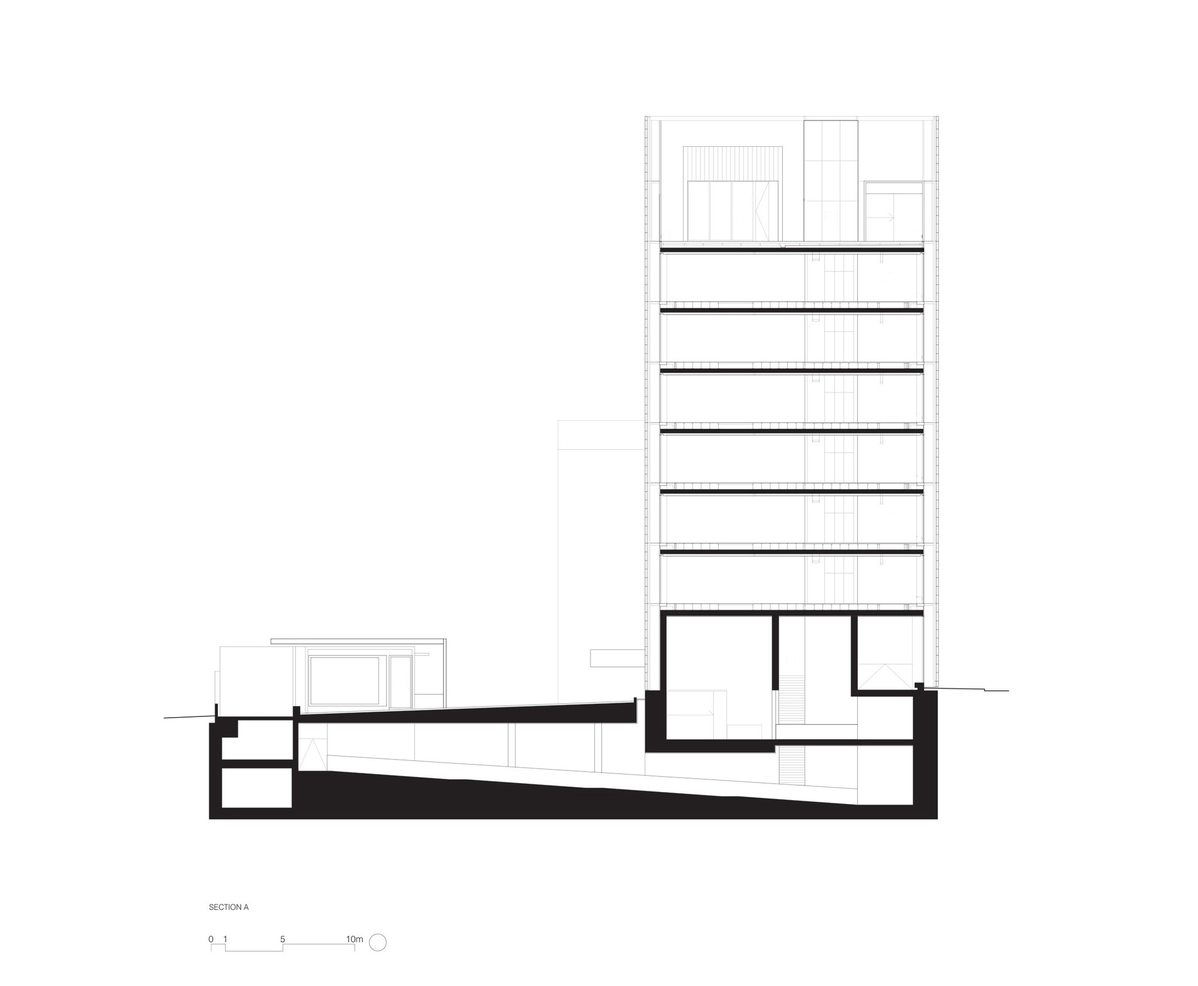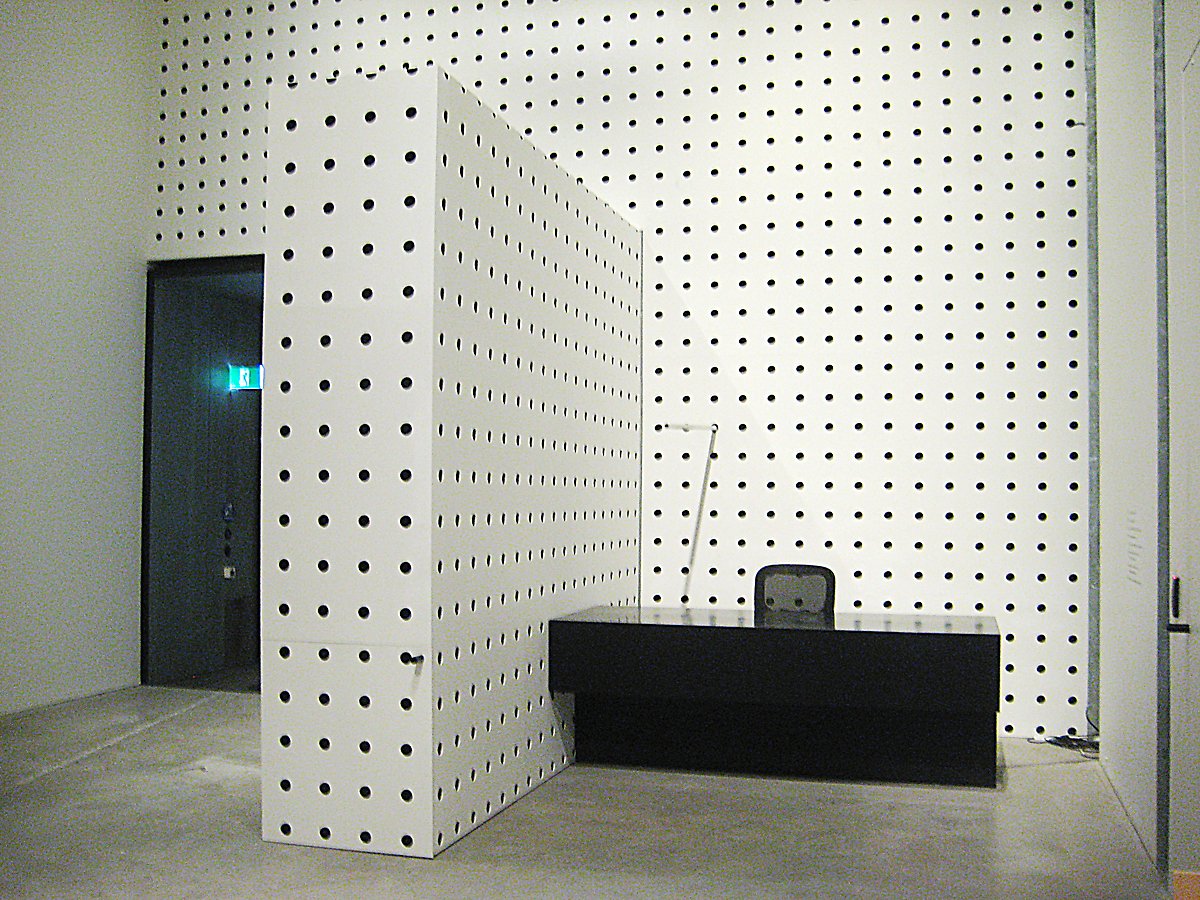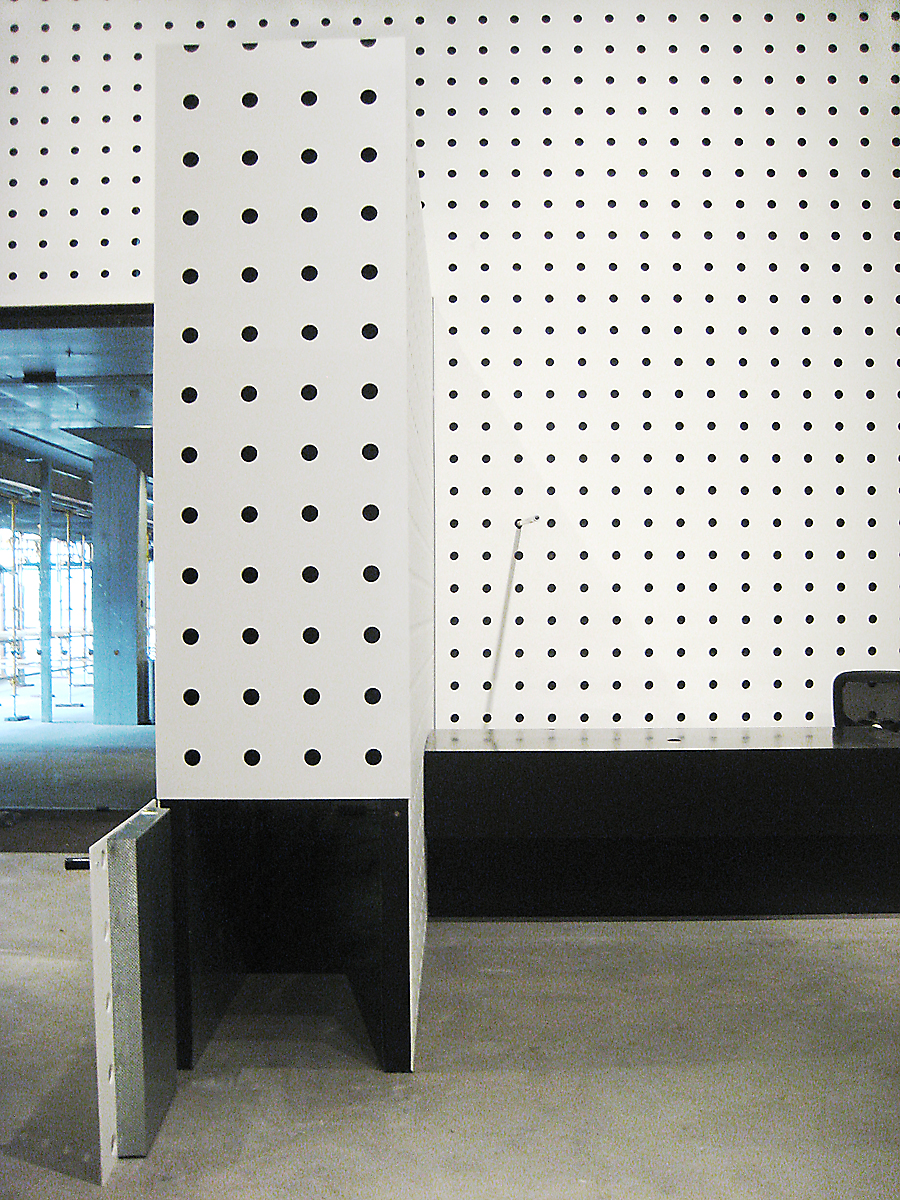Continuing the conversational approach developed in Building Movements, this project explored the gallery of the Design Hub through a further iteration in 2017. The relation between the long, tall vast expanse of the gallery and the repetition of thousands of black cut-out circles dotting the surface of a wall and the ceiling offered the potential of engaging with the existing relations. The overwhelming repetition of this exaggerated surface pattern suggested a language of extension and repetition through which to take part in a dialogue of materials and forms, contributing to the conversation with a built architectural extension.
Through an exploration of the gallery's architectural design, an alcove next to the sliding glass door made itself conspicuous through its lack of function. Located beside the main entrance to this gallery, the small alcove was the same height as the glass door, but very narrow. This was a forgotten space, a somewhat redundant addition to the glass door, a superfluous extension. Following from the idea of creating seams, as developed in the Writing Writing Movements Tentatively project, this alcove offered a seam in the same way the elevator in Building Movements offered a seam. As a means of engaging with the existing material and formal relations of this architectural environment, this alcove was extended by continuing its dimensions outwards into the space of the gallery with the same acoustic boards that panelled the surrounding walls. The continuation of the gallery wall panels extends the materials and forms that are present as well as the circles cut into the wall panels that are already somewhat exaggerated.
The extension became part of the original through the repetition of forms and materials and began to inflect this environment. An interaction is initiated, a form of conversation between these material additions takes place, and this leads to an alteration of the relation that a person has with this space. As a new conversant enters this conversation, its agency affects this conversation and the relationships already at play. This inflection contributes a material and formal utterance to that ongoing conversation and, through the repetition of forms and materials, offers an amplified echo of what has already been uttered by this environment. This amplification and inflection begins to shift the conversation. Engaging with these additions through material encounters, through touch, through movement and exploration, can lead to the alteration of the engagement with the other elements in the surrounding environment.
New Materialist philosophy proposes that the condition of being material offers a potential for finding common ground among and between agents. As Bennett writes, “Materiality is a rubric that tends to horizontalize the relations between humans, biota, and abiota. It draws human attention sideways, away from an ontologically ranked Great Chain of Being and toward a greater appreciation of the complex entanglements of humans and nonhumans.” This horizontalization of relations offers the conditions for beginning a conversation between human and non-human agents. Furthermore, such conversations, recognising this shared material agency, can begin to reveal an aspect of being human that is also shared by these non-human conversants.
Video of Extrusion
A door at the front of the extrusion opens onto a crawlspace, which draws a person into this strange alcove, lined with perforated sheet metal similar to that which lines the elevators and is also used as the suspended ceiling in the bathrooms. At the end is the alcove, where one can stand up in the tall, narrow space. The suggestion of ductwork and electrical cabling inside the volume above the crawlspace questions whether there is a utilitarian function for this continuation of the architecture and potentially raises questions as to whether it operates as part of this building.













